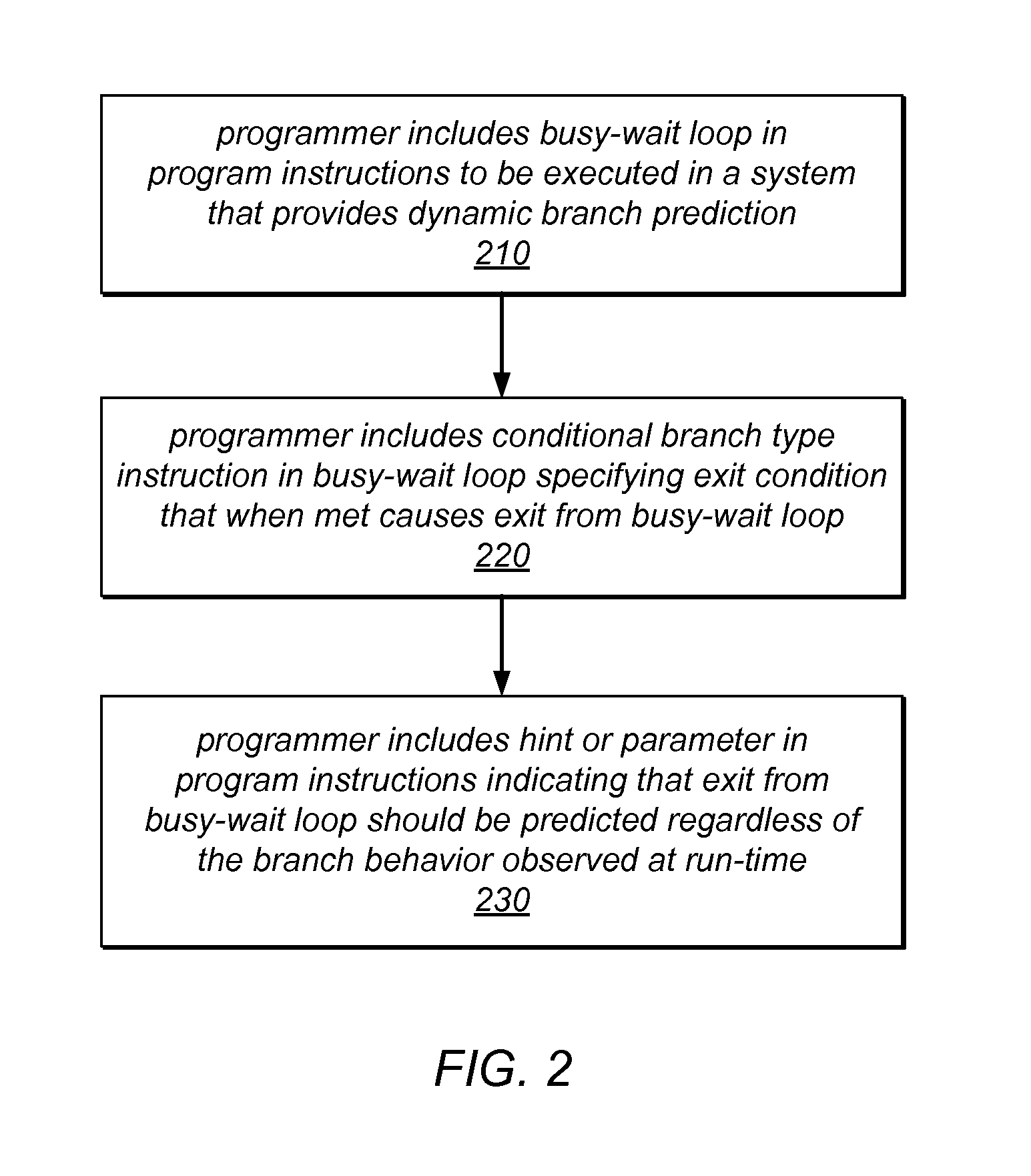System and Method for Mitigating the Impact of Branch Misprediction When Exiting Spin Loops
a technology of branch misprediction and spin loop, which is applied in the field of system and method for mitigating the impact of branch misprediction when exiting spin loop, and can solve problems such as significant performance loss, stalling of microprocessors, and stalling due to misprediction
- Summary
- Abstract
- Description
- Claims
- Application Information
AI Technical Summary
Benefits of technology
Problems solved by technology
Method used
Image
Examples
Embodiment Construction
[0019]In various computing systems, spin loops (which may also be referred to herein as busy-wait loops) may be used for inter-thread communication. For example, they may be employed in a computer system to implement waiting for an inter-thread communication event to occur, or to implement waiting for a lock on a shared resource or critical section of code to become available. If program execution encounters one of these spin loops (or busy-wait loops), it may enter the loop and wait for a specified exit condition to be met. Once the exit condition is met, the execution flow may be transferred out of the loop (e.g., by branching). In some embodiments, conditional branch type instructions may be used for controlling the flow of an application that includes various types of spinning / waiting constructs. For example, a conditional branch type instruction may specify a condition that when met causes the program to exit a spin loop.
[0020]As used herein, the term “conditional branch type i...
PUM
 Login to View More
Login to View More Abstract
Description
Claims
Application Information
 Login to View More
Login to View More - R&D
- Intellectual Property
- Life Sciences
- Materials
- Tech Scout
- Unparalleled Data Quality
- Higher Quality Content
- 60% Fewer Hallucinations
Browse by: Latest US Patents, China's latest patents, Technical Efficacy Thesaurus, Application Domain, Technology Topic, Popular Technical Reports.
© 2025 PatSnap. All rights reserved.Legal|Privacy policy|Modern Slavery Act Transparency Statement|Sitemap|About US| Contact US: help@patsnap.com



